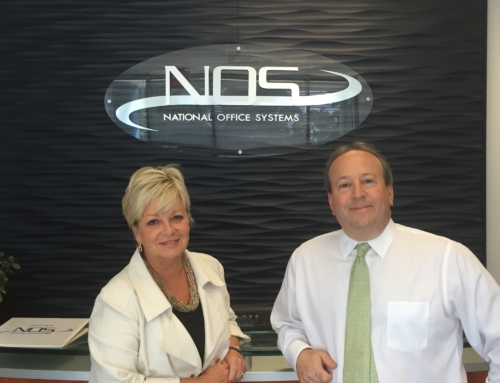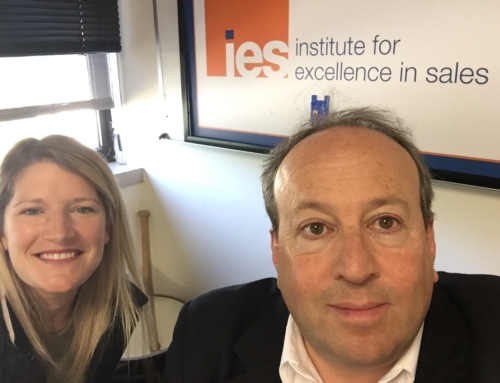For any small to mid sized tech or professional services company to have any possibility of success, the CEO must have a vision, and that vision must be supported by the company’s management. The company’s marketing leader (either outsourced or in-house) must successfully siphon the vision from the CEO’s head and powerfully communicate it across the organization and to external audiences. The tech marketer must mind meld, if you will, with the CEO.
If the marketing leader is not skilled at extracting the vision from the CEOs brain, the CEO should start looking for someone who knows how to do this ASAP. It’s a critical step to success.
I have developed and implemented hundreds of product, vertical, and corporate marketing plans for high-tech and professional services companies over the past two decades. In every case where the company was successful, it was because the CEO had a strong vision of where the company should go to tap into a market opportunity. That was true IN EVERY CASE.
It has always occurred to me that a large part of this was due to how we got the vision out of the CEO’s head communicated and understood through the organization and into the market. In some cases where the market opportunity was nuanced, this effort was a challenge. In others, it flowed. If we couldn’t make this happen, the chances for success dwindled.
There are many reasons why tech CEOs have difficulty getting their visions out of their heads.
- They are often technology, scientific or application development experts who’ve come up with a great product or service idea. By nature, communicating technical ideas to non-technical crowds can be challenging.
- They don’t understand why their teams “just don’t get it.” Impatience kicks in, and their frustration with their support staff mounts.
- Their marketing teams do not realize that it’s their job to get their leader’s vision out of their head and into the market place.
When I went back and reviewed the companies that I worked with that were very successful, they shared a common characteristic. They had a CEO with a strong vision who needed help getting it from their brains to where their internal staff could understand it and the market could react to it. Usually, I was invited in to help because the internal marketing resources did not have the necessary skills to help the CEO formulate, crystalize, and communicate the vision to the market.
Many of my clients had just reached their first plateau. Many of the early sales were because of the CEO’s efforts, often to a company they had previously done business with. Now that they’d reached the first plateau, the leaders felt that the market was ready for a stronger effort.
Here are two examples of how we worked with strong CEOs to help make the vision materialize into the marketplace.
COMMUNICATING HOW CONTINUOUS IMPROVEMENT CAN SAVE COMPANIES BILLIONS
One of the companies I worked with, Contact Solutions, Inc. (CSI), was at the forefront of the shared Interactive Voice Response (IVR) market. IVRs are the devices that automatically speak to you when you call a toll-free number. CSI took the concept of shared IVR service to the next level and forged into the market winning numerous sizable deals early on.
The value behind utilizing a shared IVR service, however, was not completely obvious to everyone. The CEO at the time, Paul Logan, had a unique vision for the firm that was embraced by his two partners and the rest of the management team. By having every operation of the shared IVR service perfected and managed to the nth degree, customers calling into the IVR would receive the optimal level of service. If the customer got what they needed, they’d be satisfied and would hang up without hitting zeros to get to a live attendant.
Logan used to tell me that callers didn’t hate interacting with IVRs; they just hated not getting serviced.
Now here’s the kicker. Even though CSI’s approach to optimizing the entire process was way ahead of its time, the real value of the shared IVR was that if the process and service continuously improved, CSI’s shared IVR services could save large companies millions of dollars.
Logan was a big believer in this marketing message and vision. We spent many hours honing this vision and validating it so that internal audiences could understand its value and external audiences could see how it could provide huge returns.
We were able to build a strong marketing plan around this vision. To ensure that everyone in the firm understood it, we created a contest in which each employee had to present within 5 minutes how they were continuously improving their part of the business. We held the contest in March mimicking college basketball’s March Madness. We tied continuous improvement of IVR into all of the sales tools and developed case studies that verified this.
The more worthwhile marketing activities we conducted that highlighted continuous improvement, the richer and deeper Logan’s vision got.
COMING UP WITH THREE WORDS THAT CRISPLY DESCRIBE THE CEO’S VISION
When I was at Compuware Corporation, we marketed products that helped mainframe and client-server users build, test, and manage applications. Those three words became the base of our marketing communications efforts, particularly when we marketed multiple products as a larger solution.
My having worked on this marketing effort came in handy when I was engaged by Jenny Daley, CEO at Omega Performance, a company that provides credit and sales training to banks and credit unions. The company had been in business for over three decades and was the standard-setter in banking training.
When Jenny took over, the training approach was in need of freshening. She brought in a team to revamp in order to make their offerings more palatable to a challenged customer base. The banks they serviced were in dire need of ways to show their customers how they were different from the plethora of banks in the same neighborhood. Jenny’s vision was for a multi-layered blended training approach combining enterprise e-learning licenses, skills applications labs, and online coaching modules, templates, and toolkits. It was revolutionary for this market.
Now that the training curriculum was refreshed, we needed to create a marketing story to get her vision understood across the company and into the market. Using the approach we developed at Compuware, we embarked on a journey to come up with a few words that could encapsulate Jenny’s vision. It would have to be understood internally, communicated during sales meetings with prospects, and propagated by the marketing team whenever and wherever the firm communicated its offerings.
After a few sessions of intense processing, we came up with the mantra of Understand, Apply, and Differentiate (UAD) that brought everything together for internal and external audiences. The approach made great sense for her customers:
- Understand core credit fundamentals, customer business goals and challenges, and their internal business goals and needs.
- Apply knowledge to better serve customers, techniques to drive profitable business opportunities, and best practices to ensure consistency and quality.
- Differentiate people by enabling them to be better bankers, products and services by focusing on value, and the organization to win more business.
We were able take Jenny’s vision and produce a theme that the sales team could readily discuss with their customers and the marketing team could produce materials around. To see a marketing application of UAD, check out this video on the Omega Performance web site.
MARKETERS GOT TO BE SIPHONING
I originally was going to say that marketers should be sucking the vision from their CEOs’ heads, but it sounded a little too graphic. Nonetheless, in small to midsized tech and professional services firms, CEOs need marketing leaders who are able to get their vision clearly communicated. If their marketing team is not doing that, they need to find those resources ASAP.
Fred Diamond is a top marketing consultant to technology and professional services companies and the co-founder of the Institute for Excellence in Sales. He has helped hundreds of CEOs get their vision out of their heads and into the market.






